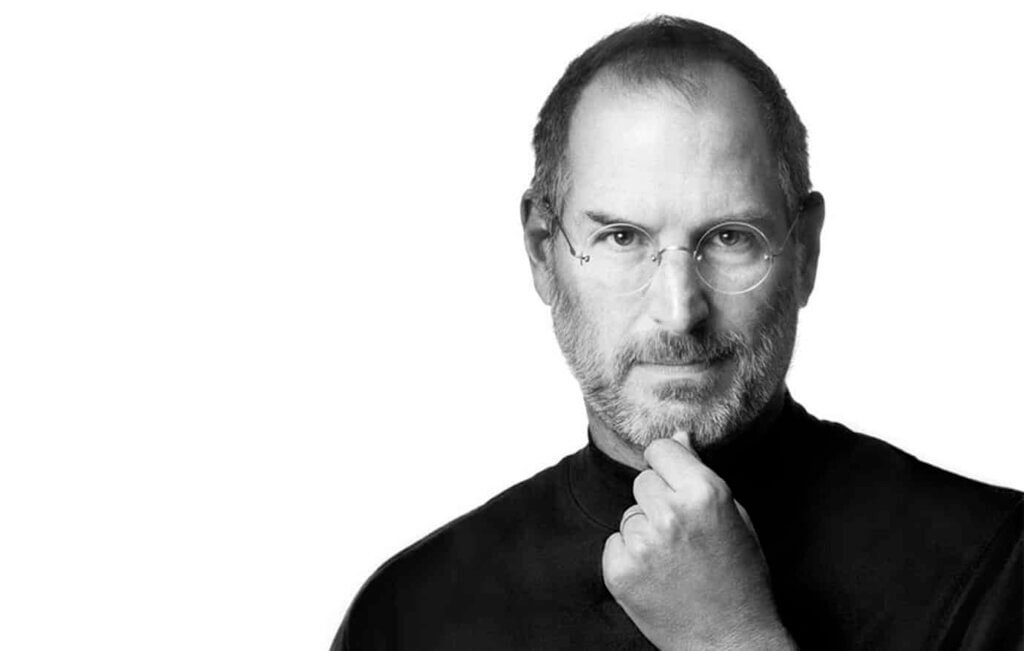You probably haven’t heard this one. It’s time you did!
Legendary Leader
Steve Jobs earned his place as one of the most influential business leaders of the past century. With Apple, he achieved his goal of “putting a dent in the universe.” Not only is Apple worth $2.1 trillion, but more importantly to Jobs, Apple changed the world we live in with the Macintosh, iPod, iTunes, iPhone, App Store, iPad, etc.
Jobs was uniquely skilled in thinking differently, creating bold visions, and inspiring/pushing teams to make the impossible possible. As painful as it was for him, I’m glad he lost control of Apple early in his career. I think it humbled him and gave him a chance to “think again” with NeXT Computer and Pixar where he learned things and acquired skills that helped him when he returned to Apple.
My Favorite Quote
Steve Jobs had hundreds of great quotes. But the one I like best is an obscure one from Steven Levy’s 2007 book, The Perfect Thing: How the iPod Shuffles Commerce, Culture, and Coolness. When describing problem solving, Steve Jobs said:
“When you start looking at a problem and it seems really simple with all these simple solutions, you don’t really understand the complexity of the problem….Then you get into the problem, and you see it’s really complicated. And you come up with all these convoluted solutions….That’s…where most people stop….But the really great person will keep going and find the key….The underlying principle of the problem. And come up with a beautiful elegant solution that works.”
Jobs builds on the insight from a century ago when US Supreme Court justice Oliver Wendell Holmes said, “I would not give a fig for the simplicity this side of complexity, but I would give my life for the simplicity on the other side of complexity.” (emphasis added) To get to elegant solutions, we have to push past the initial oversimplified “solutions” of uninformed people and then past the overcomplicated “solutions” of well-informed people.
Phase 1: “Seems Really Simple”
When you first look at a problem (as an outsider or as an executive), it’s easy to say, “You’re making this too complicated. The problem is X and the solution is Y. Why is this so hard?!?!”
We’ve all done this. What looks like a simple problem, often isn’t. If it was really that simple, it probably would have been fixed by now. The fact that it hasn’t been fixed yet, and the fact that it has come to our attention, should give us reason to pause and ask ourselves, “What am I not seeing here? Why are smart, capable people struggling with this?”
Phase 2: “It’s Really Complicated”
Once you get in the middle of the problem and start working to fix it, you quickly realize why others have struggled to fix it. There are technological challenges, resource issues, prickly personalities, political issues, etc.
The natural reaction to seeing all this complexity is to come up with “convoluted solutions.” We think to ourselves, “Complex problems require complex solutions.” Jobs is right when he says this is where most people stop.
These “solutions” are criticized and doubted before they even begin to be implemented. Others say, “Why are we creating this huge, complicated, bureaucratic process to address such a little problem? Why do we have to waste all this time and money on software, training, auditing, scorecarding, and policing?”
Phase 3: “Find the Key”
“The really great person will keep going and find the key….The underlying principle of the problem. And come up with a beautiful elegant solution that works.”
An “elegant” solution is (1) simple and (2) effective. Remember how much easier it was to use iTunes and an iPod compared to all the other options in the early days of MP3s?
Elegant solutions rarely come quickly. They usually come after pondering and thinking about the problem for a long time and then letting it simmer in our subconscious until genius strikes at a most unexpected time (often in the shower, on a walk, in the middle of the night).
Slowing Down to Speed Up
Years ago as a busy executive at a multi-billion-dollar company, my chairman told me, “You need to spend more time staring at ceiling tiles.” He was right. On the really important problems, it’s important to slow down, think deeply, and not jump to conclusions.
In my experience, it has been especially helpful to talk to a wise, experienced person who is a powerful listener and asks great questions that help me see things differently.
If you need someone to talk to about a difficult problem with your organization, give me a call or send me an e-mail. I’d love to help!

